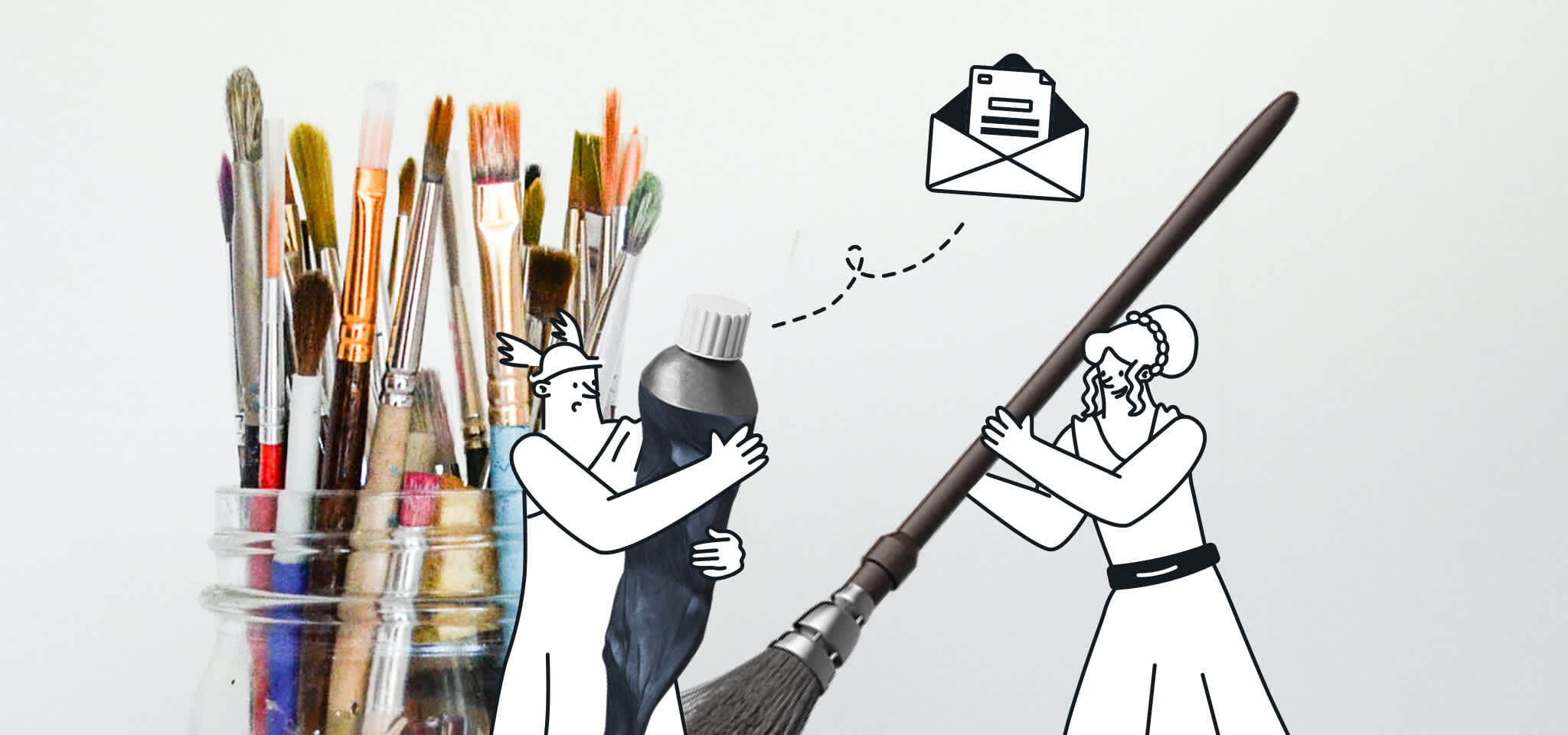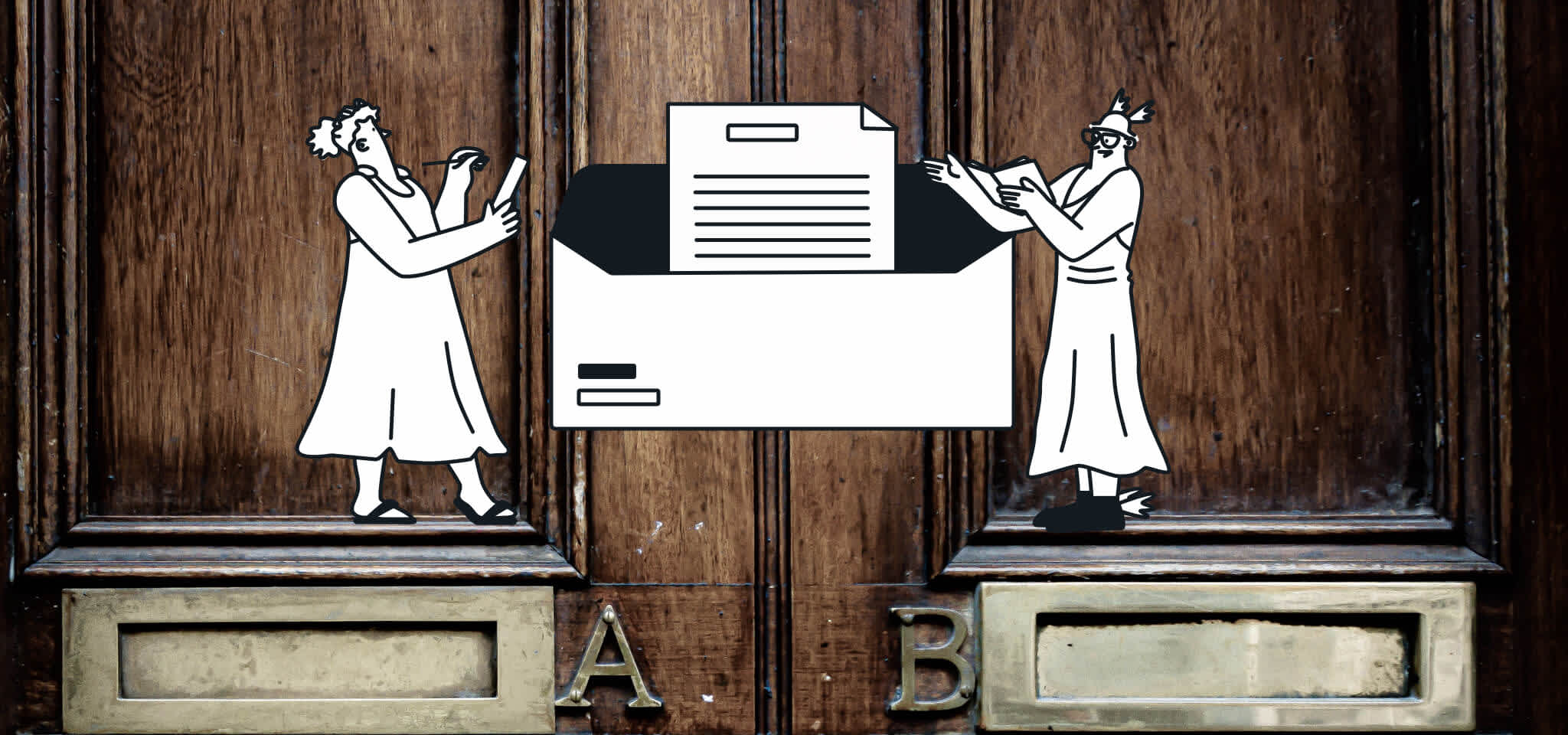Email best practices
Key parts of every email campaign
Understanding the different parts of an email is key for designing and sending effective marketing campaigns. Learn how each of these sections impacts the performance of your emails and how to optimize them.

PUBLISHED ON
Like a high-powered rocket designed to propel your business toward profitability, an email marketing campaign comprises multiple moving parts. These essential components create an opportunity to connect with your subscribers and win positive engagement.
However, those different parts of an email also create the opportunity for multiple points of failure. So, email marketers need to understand precisely what each part of an email message does and how those individual elements can be optimized to maximize success.
The good news is email marketing optimization isn't rocket science. It's often just a case of checking that the different parts of an email message are fit for purpose and then fine tuned to help you reach your marketing objectives.
Throughout this blog, we'll highlight the importance of each part of an email and share some essential tips to optimize your email marketing campaigns.
Table of contents
01What different parts is an email message formed by?
What different parts is an email message formed by?
When an email arrives in your inbox, some parts of the email are immediately obvious – things like the subject line, email design, and body text.
But some elements might not be so apparent. We can think of these parts as the foundation and structure of your email. They are what your campaign is built on and hold everything together.
These parts of an email include the following:
Body of the email: This is the blank canvas for you to place the content your recipients see in their inboxes.
Envelope: The envelope refers to the technical framework or parameters wrapped around each email message. Completely invisible to both the sender and recipient, the email envelope is the glue that holds everything together.
Header: The email header is the technical information contained within an email message relating to the sender and recipient. Some of this information will be visible to everyone, highlighting who the email is from and who it is addressed to. Other information will be hidden and is used primarily by mail servers and ISPs for email routing and delivery.
The envelope and the header are highly technical parts of an email you’ll have little influence over.
However, there are parts of an email, specifically those within the body of the email, where you have complete control as a marketer. So let's take a look at the parts of your email campaigns where you can get really creative.
The anatomy of an email campaign
So, aside from the technical components, what are the different parts of every email campaign marketers should know about? How can they be customized? And, most importantly, how do each of them impact the success of your emails?
Let’s look at the elements where your email marketing service provider hands over the control to you.

Understanding the different parts of an email and the role they play is key to achieving email marketing success.
Subject line
Your email marketing subject line represents your first opportunity to win or lose your subscribers' engagement. Once your subscribers have seen your subject line, they should be in no doubt about what your email is about.
You should write your subject line like a newspaper editor writes a headline. It should tell the whole story and scream benefits. But getting it right isn’t always easy, so make sure you check out some email subject line examples and best practices before you get started.
If you've taken the time to segment your lists based on your subscribers' interests and their current position in the sales funnel, a well-written subject will demand engagement.
From name
Email messages should always be sent from a recognizable name. This name could be the company brand or a known individual from within your organization (such as the business owner, CEO, marketing manager, or an account manager). You can test different options to see what works best with your audience.
When you define your From Name, you’ll also define your sending address and reply-to address. This will not be visible for your recipients at first, but is another key part of your campaign that you’ll want to consider.
Remember, email is a two-way communication channel, so your emails should always be sent from a monitored email address. Never send emails from a “no-reply” email address.
Pre-header
Your email pre-header is the text that is seen alongside your subject line in the inbox. If you think of your subject as the headline, your pre-header text is the subheadline.
When nothing else is defined, the pre-header text is just the first line of text in your email body copy. However, this element can be – and should be – customized. Email marketing best practice recommends using it as a call to action to encourage your subscribers to open your email and engage with your offer.

The subject line, from name, and pre-header are all displayed in the inbox before the recipient opens the email.
Body of the email
The body of the post is where all of the text and images of your campaign go. It's considered best practice to prioritize text over heavy use of graphics – this is because spammers often hide messages in image-only messages to avoid the spam filters picking it up. So, nowadays email clients commonly flag image-only emails as spam.
Image heavy emails can also weight more, use up more data, and have images blocked by certain internet service providers (ISPs). So, we recommend marketers consider a 60/40 ratio between text and images.
Select your hero images wisely. One good picture is often better than multiple images that may clutter your design. When using any images at the top of your email, be careful not to push any text relating to your offer out of view (below the fold). Because the vast majority of emails are now viewed on mobile devices, the design should be simple, with clear "finger-friendly" navigation and clear calls to action.
There are two schools of thought regarding your email body copy length. Some marketers prefer short and easily consumed content, while others opt for more detailed content. Testing both options, as well as other design choices in your email body, is the only way to know what your subscribers prefer.
The “above the fold” section of your email body is what readers see first when they open an email, before they scroll down. Place your main headline and CTA above the fold and ensure it captures your recipient’s attention. Using tools like Inbox Previews will help you understand how different emails will look on different mailboxes and different devices so you can fine tune your above-the-fold content.
Main CTA
Once your subscribers have consumed your email content, they should be left in no doubt about what you want them to do next.
Your main call to action (CTA) should be the most visible element in your email campaign. If people cannot immediately locate it, they may never take the opportunity to continue their engagement with your campaign. Remember – there’s no right number of CTAs in an email campaign, but make sure you know what the main goal of the email is and match the main CTA accordingly.
When it comes to the actual CTA text, your brand voice and some copywriting best practices will help you find the perfect style for your business. You could opt for a clear and simple instruction to "Learn more" by visiting a blog post or simply a direct invitation to visit a product or service page where they can "Buy now." Or, if your brand voice allows, you might want to test some more creative choices and use wordplay or puns to capture the reader’s attention.

Make sure the most important information in your email is placed “above the fold”.
Footer
The footer is another essential part of any email campaign. Your footer not only contains the information to keep your campaigns compliant with email marketing regulations like GDPR but it should also include your organization's registered address and unsubscribe links.
A well-designed email footer also provides the perfect opportunity to display social media share buttons, helping you to enhance the reach of your email marketing campaigns beyond your email marketing subscriber lists.

Ensure your legal information and unsubscribe links are present in the email footer.
Optimize the different parts of your email with Mailjet
Every single part of your email messages can be optimized to improve the success of your campaigns. Looking at the different parts of your email messages and testing various approaches against alternative strategies will help you make the most of some of these key elements. This strategy is often referred to as A/B split testing.
A/B split testing selects one part of an email (such as a subject line or CTA) and then tests it against alternative versions. With A/B testing tools like Mailjet’s, you can test up to 10 different versions, which will then be sent to a subset of your list, before the winner is sent to the remainder of their list.
While many marketers understand the value of split testing, too few take the time to test their campaigns and learn from the results regularly. Use A/B testing now to take the guesswork from your email marketing campaigns.








